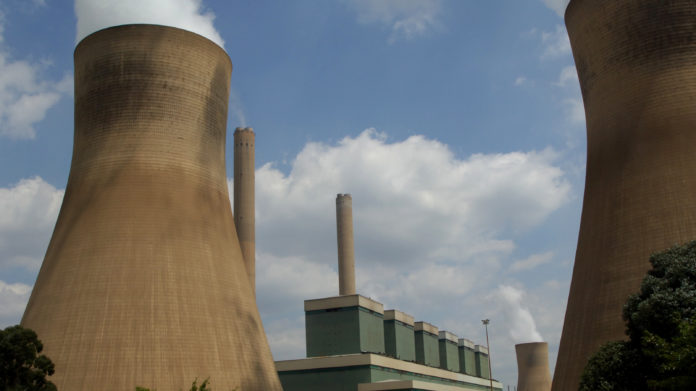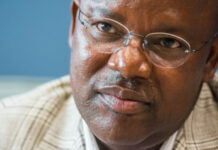
ESKOM wants to delay the shutdown of its coalfired power stations to allow the country some “breathing space” while new generational capacity is being brought online, said Vikesh Rajpaul, GM of the Just Energy Transition at Eskom.
“This does not entail their life extension, but rather the sweating of assets by continuing the operations of these stations beyond their anticipated decommissioning.”
Speaking at the Joburg Indaba mining conference in Johannesburg, Rajpaul said Eskom is fully aware of the impact carbon emissions have on climate and still supports South Africa’s ambitions toward a net zero pathway, but the timing of the transition to clean energy must be socially just and sensitive to jobs and the local economies.
Asked if Eskom’s intention to extend its coalfired power generation will have a bearing on the donor funding it received in 2021, Rajpaul said there are discussions with the funders that is being dealt with at “presidential level”.
At the COP26 climate conference in Glasgow, Scotland in 2021, South Africa was promised $8.5bn in financing by France, Germany, the UK, US, and the European Union for its just energy transition programme.
Delaying the move away from coalfired power generation could mean South Africa will not adhere to the conditions set by the donor countries.
Rajpaul said Eskom hopes to keep operating some coalfired power stations until 2030, but the decision ultimately lies with the minister of environmental affairs who will have to allow for special arrangements in terms of the minimum emission standards (MES) requirements. “The MES place restrictions on us in terms of our emissions and our ability to meet our part of the climate compact,” Rajpaul said.
The continued operations of the coalfired power stations are also subject to certain technical conditions, such as whether the past maintenance of the stations was sufficient to secure continued safe operations.
According to Rajpaul, Eskom’s maintenance programmes have over the years been curtailed by a lack of funding due to “non-cost reflective tariffs”.
“Eskom’s tariff applications have never been granted to the extent of what we had requested and, on many occasions, we were forced to go to court.”
The impact of the differential of what Eskom received versus the tariff increase it requested meant the power utility could not do the necessary planned maintenance.
“You cannot plan maintenance if you’re unsure about the tariff you’re getting from a business perspective. It also had an impact on Eskom’s energy availability factor.”
Rajpaul said Eskom has also decided to decouple its station decommissioning from the repurposing and repowering of old power stations.
Eskom has come under fire for the way in which the decommissioning of its Komati power station was conducted. The power plant, situated in Mpumalanga, reached the end of its life in October last year when Eskom decommissioned its last unit. The step however had a profoundly negative impact on the surrounding communities.
Rajpaul said Eskom learned from mistakes made at Komati. “The intention is to have continued economic activity at the power stations that will be decommissioned so we don’t have a repetition of what’s happened at Komati.
This will require socio-economic impact assessments and creating new economic opportunities at other power stations, not necessarily in terms of electricity generation, but alternative activities, such as the manufacturing of containerised microgrids, ash beneficiation and recycling initiatives, Rajpaul said.









